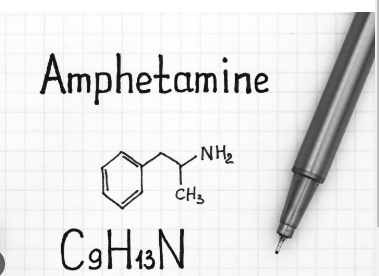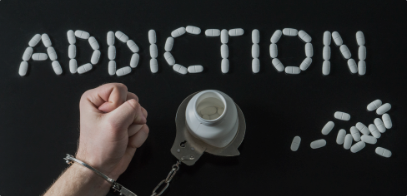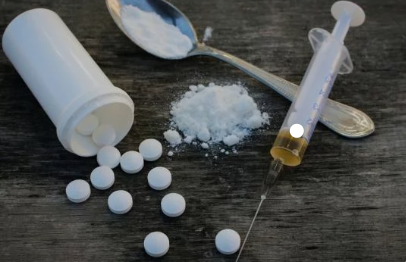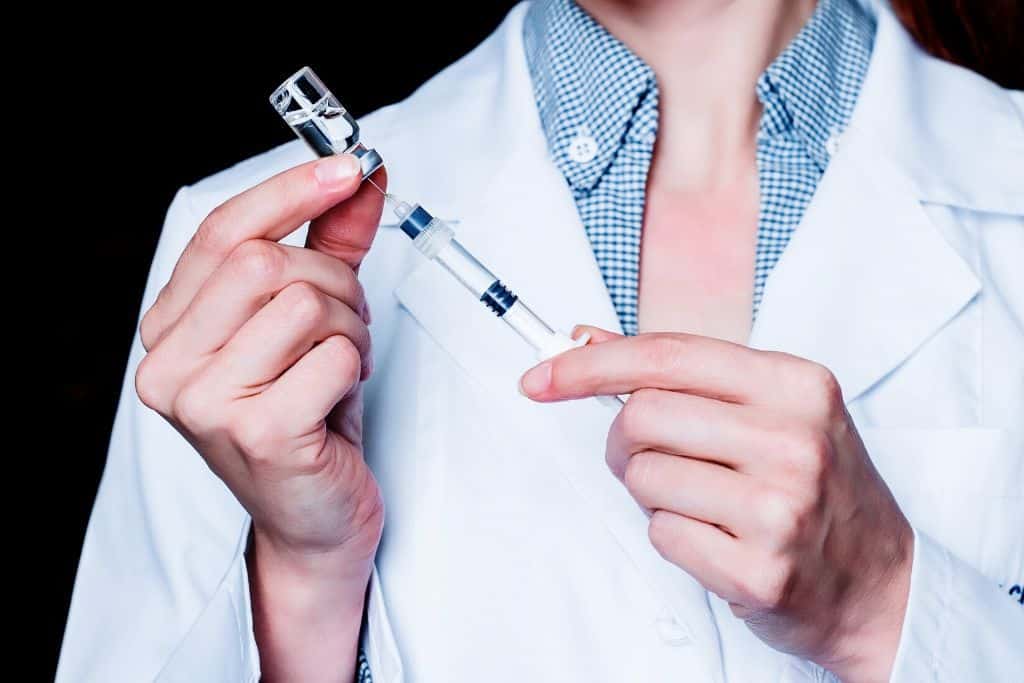How Long Do Amphetamines Stay In Your System?
Half-life is one way to tell how long a drug stays in your system. Knowing about the half-life of amphetamines will help you answer the question, “How long do amphetamines stay in your system?” Half-life is the amount of time it takes for a drug to drop to half its maximum concentration after it is taken. After five half-life cycles, most drugs are almost completely removed from the body.
The half-life of an amphetamine drug is how long it takes the body to break half of it down. For instance, a person who takes 10 mg of dextroamphetamine will have 5 mg still in their body 12 hours later, 2.5 mg 24 hours later, and so on.
Half-lives for common amphetamines are:
- Amphetamine Salts: 10–13 hours
- Dextroamphetamine: 12 hours
- Vyvanse (Lisdexamphetamine): 1 hour, then 12 hours once converted to dextroamphetamine in the body
- Methamphetamine: 10 hours
How long does Vyvanse stay in your system? Vyvanse has two half-lives because it must be converted to its active ingredient, dextroamphetamine, in the body. When someone takes Vyvanse, it takes five hours to convert to dextroamphetamine fully, and the body begins metabolism of dextroamphetamine before all Vyvanse is converted to dextroamphetamine.
How long do amphetamines stay in your blood system? Methamphetamine (meth) has a half-life of about ten hours, staying in the blood for fifty hours. However, it may remain in body tissues for far longer, not being completely eliminated for 120 hours. The half-life of a drug is almost always longer than the duration of its effects. This is because drugs tend to stay in the body long after their effects have worn off.
Even after 5 half-life cycles, traces of a drug can still be detected in hair, urine, and other specific parts of the body. Many amphetamines have similar half-lives and detection times.
How Long Does It Take to Feel Effects?
Amphetamines, otherwise known as ‘speed’ on the streets, are psychoactive drugs that speed up the central nervous system (CNS). Its use increases certain types of brain activity, resulting in a feeling of higher energy, focus, and confidence. The drugs are sold under street names or drug slang names such as Bennies, Black Beauties, Crank, Ice, Speed, and Uppers. It was also used to treat two mental health conditions, attention deficit hyperactivity disorder (ADHD) and narcolepsy, a condition in which people fall asleep suddenly.
Amphetamine’s effect is similar to cocaine, but with slower onset and longer duration. Depending on how you use amphetamines, effects can be felt immediately (injecting or smoking) and up to 30 minutes (snorting or swallowing). When a person has been using amphetamines for a long period of time or at high doses, they are likely to experience psychological and physiological signs and symptoms if they drastically reduce their dose or abruptly quit taking the drug. This is called amphetamine withdrawal syndrome, and it can be challenging to get through without support.
A common way that amphetamines are abused is by snorting. Snorting amphetamines produces a faster onset of the drug’s effects and is associated with an increased potential for overdose. Therefore, an amphetamine detox is essential to stop the damage caused by the drug before it becomes too late.

Skip To:
- How Long Do Amphetamines Stay In Your System?
- How Long Does It Take to Feel Effects?
- Amphetamines Drug Facts
- Amphetamine Addiction Statistics
- Types of Amphetamines and How Long It Takes To Feel The Effects
- Popular “How Long Does Vyvanse Stay In Your System?” FAQs
- How Long Does Amphetamine Last?
- Amphetamine Drug Test
- Amphetamine Urine Drug Test
- Amphetamine Blood Drug Test
- Amphetamine Saliva Drug Test
- Amphetamine Hair Drug Test
- False Positive Testing
- Side Effects of Amphetamine Use
- Amphetamine Detox
- Amphetamine Addiction Treatment
Learn More:

Get Your Life Back
Find Hope & Recovery. Get Safe Comfortable Detox, Addiction Rehab & Dual Diagnosis High-Quality Care.
Hotline(844) 597-1011Amphetamines Drug Facts
What Are Amphetamines?
Amphetamines are stimulants that speed up the body’s system. Some are legally prescribed and used to treat attention-deficit hyperactivity disorder (ADHD).
What Is Their Origin?
Amphetamines were first marketed in the 1930s as Benzedrine in an over-the-counter inhaler to treat nasal congestion. By 1937 amphetamines were available by prescription in tablet form and were used in the treatment of the sleeping disorder narcolepsy and ADHD.
Over the years, the use and abuse of clandestinely produced amphetamines have spread. Today, clandestine laboratory production of amphetamines has mushroomed, and the abuse of the drug has increased dramatically.
What Are Common Street Names?
Common street names include:
- Bennies
- Black Beauties
- Crank, Ice
- Speed
- Uppers
What Do They Look Like?
Amphetamines can look like pills or powders. Common prescription amphetamines include amphetamine and dextroamphetamine (Adderall), dextroamphetamine (Dexedrine), lisdexamphetamine (Vyvanse) and methamphetamine (Desoxyn).
What Is Their Effect on The Mind?
The effects of amphetamines are similar to cocaine, but their onset is slower and their duration is longer.
In contrast to cocaine, which is quickly removed
from the brain and is almost completely metabolized, methamphetamine remains in the central nervous system longer, and a larger percentage of the drug remains unchanged in the body, producing prolonged stimulant effects.
Chronic abuse produces a psychosis that
resembles schizophrenia and is characterized by
paranoia, picking at the skin, preoccupation with one’s own thoughts, and auditory and visual hallucinations. Violent and erratic behavior is frequently seen among chronic users of amphetamines.
Amphetamine Addiction Statistics
Amphetamine addiction can happen. These drugs are among the most addictive in the world. The U.S. Drug Enforcement Administration (DEA) classifies them as Schedule II controlled substances. This means that they have limited medical use and a high risk of addiction. Due to the potential for addiction, the DEA mandates that these drugs cannot be refilled. A new prescription is needed to get more. Amphetamine statistics make it clear that more people are using these drugs than ever.
13 million
About 13 million Americans abuse these drugs
Source: NIDA
4 964,000 people
Amphetamines are the second most commonly used drugs in the world, after cannabis. An estimated 0.4%, or 964,000 people in the US, aged 12 or older had a methamphetamine use disorder in 2017.
Source: SAMHSA
90%
One study found that almost 90% of college students who abuse Adderall also regularly binge drink
Source: NIDA
Types of Amphetamines and How Long It Takes To Feel The Effects
There are quite a few different types of amphetamines. Most are closely monitored prescription drugs, but some are illicit and have no medical use. Learn more about how long it takes to feel the effects of these amphetamines.
Prescription Amphetamines
Prescription amphetamines increase—or “stimulate”—activities and processes in the body. When prescribed by a doctor for a specific health condition, like ADHD, they can be relatively safe and effective. However, it is considered misuse when they are taken not as prescribed, to get “high,” or when you take some prescribed for someone else. This can lead to dependence and addiction.
Prescription amphetamines are normally taken in pill form, but some people who misuse them to get “high” crush the tablets and snort or inject them. This can be dangerous because ingredients in the tablets can block small blood vessels, damaging the heart and other organs.
Adderall
Adderall, a brand name, is an amphetamine and dextroamphetamine, a central nervous system (brain and spinal column) stimulant. It may also be regularly abused as a “study drug” to enhance focus and increase wakefulness; as a “crash diet drug” for its appetite-suppressing effects; and recreationally as a “party drug” or “rave energy pill” for the heightened euphoria, energy, and excitability it can promote.
What happens if you snort Adderall? Adderall capsules or tablets are sometimes crushed and then snorted for a faster “high.” Crushing and then snorting Adderall that has an extended-release format, like Adderall XR, bypasses the way the medication is supposed to be slowly released in set doses over a set period of time. Instead, it sends the entire amount of the drug into the bloodstream at once.

Adderall is an addictive prescription stimulant with effects similar to meth. Adderall works by increasing dopamine and norepinephrine levels in the central nervous system, making it addictive if taken regularly and at a high dosage. In addition, taking Adderall and mixing them with alcohol poses a great risk. Not only is mixing Adderall and alcohol bad, but it’s also deadly. Whether an Adderall and alcohol overdose happens accidentally or on purpose, it can lead to death.
Another drug combination that is slowly gaining notoriety is Adderall with Phenibut. Adderall with phenibut is often popularly used under the presumption that the combined effect can reduce anxiety. For many users, taking Adderall with phenibut has had a sedative effect, helping users avoid the anxiety and irritability that comes after taking Adderall.
How long for Adderall to leave system? The rate at which each person’s body metabolizes, or breaks down and eliminates Adderall varies. There are numerous variables that can influence how long Adderall remains in your body before it is metabolized.
Methylphenidate (Concerta, Ritalin, Quillivant)
Ritalin. or Methylphenidate hydrochloride—the generic for Ritalin, is a stimulant prescribed for attention deficit hyperactivity disorder (ADHD) treatment and to manage symptoms of narcolepsy (sleep disorder), but this prescription drug is also prone to abuse. These beg the question of whether a prescription drug is prone to abuse — begging the questions, “can you inject Ritalin?” and “can you snort Ritalin?” If you take Ritalin by mouth, you could start feeling the effects within twenty minutes.
Taking any drug for recreation poses risks, and snorting it is never safe. Stimulants such as Ritalin are often abused via insufflation. Snorting Ritalin encourages abuse and addiction, as it causes a person to feel the drug’s effects faster. When Ritalin is used intranasally (crushed and snorted), It has receptor effects similar to those of cocaine. A rapid release of synaptic dopamine occurs, producing subjective effects of an instant “high” and an intensely gratifying euphoria.
How long for Ritalin to leave your system? As with any drug, there are individual factors that influence how long Ritalin stays in your system. The dose you use and how you use it can influence how long Ritalin stays in your system. If you regularly use Ritalin, it may take longer for it to be eliminated from your system.
Vyvanse
Vyvanse (lisdexamfetamine) is a central nervous system stimulant medication just like Adderall. They are both approved for treating ADHD. The FDA considers this drug to have a significant potential to produce physical dependence in people who use them and are a high-risk potential drug of abuse. Is Vyvanse Addictive? There are certain outward signs of Vyvanse addiction that people may notice in their loved ones.
People often use other drugs with stimulants to enhance their high such as mixing Vyvanse and Molly, and any polysubstance abuse increases the risk of experiencing adverse side effects., while others are related to behavior and lifestyle.
Though these are prescriptions, you can buy them on the street, too. Some people fake ADHD to get a prescription or visit multiple doctors to obtain extra pills to sell. Vyvanse will begin having a therapeutic effect around 1.5 to 2 hours after taking your dose.
Peak effects from Vyvanse will occur approximately 5 hours after taking your dose. The duration of action of Vyvanse is around 10-14 hours, depending on the individual. How long will Vyvanse stay in your urine? The average person’s blood would typically continue to show Vyvanse in it for up to eight hours after taking it. For up to three days and maybe a little longer, urine tests should be able to identify Vyvanse or its metabolites.
4 Popular “How Long Does Vyvanse Stay In Your System?” FAQs
-
How long does Vyvanse 40 mg stay in your system?
Vyvanse will begin having a therapeutic effect around 1.5 to 2 hours after taking your dose. Peak effects from Vyvanse will occur approximately 5 hours after taking your dose.
-
How long does 40mg Vyvanse stay in your system?
The duration of action of Vyvanse is around 10-14 hours depending on the individual. Vyvanse will stay in your system (i.e. be detectable) for at least 2 to 3 days.
-
How long does Vyvanse stay in your system drug test?
It will for 2 days: Average half-life is about 8 hours. It takes approximately 6 half-lives for a drug to be eliminated from your system.
-
How long does Vyvanse stay in your system hair test?
Vyvanse can stay in the body for up to three days. Some people metabolize Vyvanse faster than others. Vyvanse can show up in a urine drug test for up to three days, a hair test for up to two weeks, and a blood test for usually less than 24 hours.
Illicit Amphetamines
Effects of chronic illegal amphetamine use may include anxiety, paranoia, confusion, and decreased sexual function, as well as potential damage to the cardiovascular (heart), respiratory (lungs), and central nervous systems (brain and spinal cord). Chronic illicit amphetamine use has additional physical and mental side effects such as aggression, hallucinations, tooth decay, sores, weight loss, and aging skin.
Meth
Meth is an intensely dangerous illegal stimulant that can cause users to become instantly addicted. The short-term effects of Meth include euphoria and alertness. However, long-term use of Meth can lead to problems such as violent behavior, severe dental problems (meth mouth), psychosis, and severe paranoia. Illicit methamphetamine is highly addictive. Many dealers or manufacturers cut it with other substances to stretch the supply. Cutting agents lower the quality of the drug and make it even more dangerous since you don’t know what’s in it.
The rush, or “flash” as it’s sometimes called, is the intense euphoria a person feels within seconds of injecting or smoking meth. The rush comes from a sudden flood of the pleasure chemical dopamine in the brain.
During a meth rush, the heart rate quickens, pupils dilate, blood pressure soars and metabolism kicks up several notches. The feeling of a meth rush has been compared to having multiple orgasms. This intense phase usually ends in five minutes, but it can last up to half an hour. A person won’t feel a flash when snorting meth or swallowing it.
Common meth slang names include Speed, Ice, Crank, Cristina, Trash, and Chalk, to name a few. Methamphetamine can kill you. High doses can cause the body to overheat to dangerous levels. Methamphetamine overdose nearly tripled from 2015 to 2019 among people ages 18-64 in the United States. What does meth feel like? Meth gives the user a rush of energy and intense feelings of pleasure.

Crystal Meth
Crystal meths are usually a colorless and odorless form of methamphetamine that typically resembles small fragments of glass or shiny blue-white “rocks” of different sizes. Crystal meth addiction has devastating effects. It can cause lung disorders, kidney damage, hyperthermia, substance-induced psychosis, stroke, and cardiac arrest.
Crystal meth can also be smoked, snorted, injected, or orally ingested. It usually has a higher purity level and may produce even longer-lasting and more intense physiological effects than the powdered form of the drug. The effects can last for a period of between 4 and 12 hours.
The initial response the abuser feels when smoking or injecting methamphetamine is called “the rush.” During the rush, the abuser’s heartbeat races, and metabolism, blood pressure, and pulse increase. Unlike the rush associated with crack cocaine, which lasts for approximately two to five minutes, the methamphetamine rush can continue for up to thirty minutes.
Crystal meth can stay in the system longer than a weaker form of the same drug. The question is, how long does crystal meth stay in your system? One of the main reasons to be aware of how long meth remains in the system is the risk of overdose. Crystal meth abuse use can have a profound impact on the users’ sleep. This is because meth releases a surge of chemicals known as serotonin and dopamine into the body. This is why most people who are “high” can’t sleep after meth use.
Ecstasy / Molly / MDMA
MDMA, or “ecstasy,” comes in the form of a pill. In addition to affecting dopamine levels in the brain, MDMA affects the nerve cells in the brain that use the chemical serotonin to communicate with other nerve cells. The unique chemical structure of MDMA causes both hallucinogenic and stimulant effects, such as bursts of energy, changes in how time is perceived, and sensitivity to touch.
Ecstasy and Molly come in pills, capsules, and powder. They’re well-known club drugs that are popular at music festivals. In addition, some people take MDMA in combination with other drugs such as alcohol or marijuana, which increases the danger of Molly addiction.
When someone takes molly, it’s rapidly absorbed in the intestines and people may feel the effects of molly 30 minutes after taking it and reaches its peak level in the bloodstream about two hours later. That’s when people will typically feel the most intense hallucinogenic effects of the drug, which usually last for three to five hours.
Get Help. Get Better. Get Your Life Back.
Searching for Accredited Drug and Alcohol Rehab Centers Near You?
Even if you have failed previously and relapsed, or are in the middle of a difficult crisis, we stand ready to support you. Our trusted behavioral health specialists will not give up on you. When you feel ready or just want someone to speak to about therapy alternatives to change your life call us. Even if we cannot assist you, we will lead you to wherever you can get support. There is no obligation. Call our hotline today.
(844) 597-1011How Long Does Amphetamine Last?
The amphetamines can last at different lengths depending on the drug used. The effects of these drugs generally last for about 4–6 hours. However, some prescription formulations last much longer. For instance, Adderall XR (extended-release) contains beads that slowly release the active ingredient over 8–12 hours.
Vyvanse works for about 8–12 hours but has unique pharmacology. The molecule is dextroamphetamine attached to the amino acid, lysine. When Vyvanse enters the body, proteins in the blood cleave off the lysine molecule and leave active dextroamphetamine. Methamphetamine causes peak effects within a few hours after use and can last between 8–12 hours for most people regardless of the method of administration.

Amphetamine Drug Test
Amphetamines are included in the standard 5-panel drug test that employers often use. More in-depth tests like 10 or 12-panel tests will also include amphetamines. How long amphetamines remain in the system will depend on several factors including age, metabolism, frequency and amount of use, weight, and size, and other things. Additionally, the type of drug test used will also affect the length of time that the drugs can be detected.
An amphetamine drug test is very common because of the drugs’ ability to create major safety risks in almost all workplaces. Additionally, the fact that amphetamine users often resort to illicit behavior in order to access the drugs means that employers use these drug screenings to protect themselves against dishonest activity. These drug screenings are also regularly used following an accident or workplace injury in order to ensure that the drugs are not responsible or potentially responsible for the accident.
Amphetamine Urine Drug Test
How long do amphetamines stay in your system and how long does amphetamines stay in urine? Amphetamine drug test for urine is one of the most common forms of drug testing. Amphetamines can be detected in urine for about three days. Urine PH, or how acidic urine is, can also affect how long a drug stays in urine. Higher pH levels can affect detection times. Diet and substance use can both affect urinary pH.
How long does Vyvanse stay in urine? Amphetamine can be dangerous to your health if you take too much. If you have been prescribed this drug, your healthcare provider may use this test to make sure you are taking your dose. Healthcare providers may also order a blood or urine screen for methamphetamine if you come to the ER with signs of a drug overdose. Methamphetamine changes to amphetamine in the body.
Even if you do not use amphetamines, you may need this test to get a job. In addition, if you are a parolee or someone being treated for drug use disorder, you may also need this test to show that you are not using drugs. How long do amphetamines stay in your system, and why is it important? Companies often use amphetamine drug tests for urine to screen new employees for drugs, including amphetamine. Urine tests cost less than blood tests.
Amphetamine Blood Drug Test
How long do amphetamines stay in your system? A blood test measures the amount of amphetamine in your system. Blood tests can detect amphetamine metabolites for anywhere between several hours to over a day. In general, amphetamines last in the bloodstream up to 46 hours (almost two days) after use. Amphetamine salts and dextroamphetamine stay in the blood for about 60 hours.
How long does Vyvanse stay in system? Vyvanse stays in the blood for 5 hours but is quickly converted to dextroamphetamine, so it has an effective time in the body of 65 hours. Drug tests will detect it once it converts to dextroamphetamine. Methamphetamine is detectable in the blood for about 25 hours. Blood tests tend to be less popular than other types of drug tests. However, blood tests are seen as more accurate than urine tests, but the detection window tends to be shorter.
Amphetamine Saliva Drug Test
How long do amphetamines stay in your system? How long does Adderall stay in your saliva drug test? Oral fluid tests can detect amphetamines from 24 to 48 hours after intake. Saliva tests are noninvasive, and it is easy to collect samples. In addition, they can detect the parent drug rather than its metabolites and can detect same-day use in some cases.
Using a swab or absorbent pad is the most common way to take a saliva specimen. However, if blood is present in the oral fluid sample, additional blood or urine tests will be required for accuracy. In addition, because a limited amount of saliva is collected for a sample, it may not be possible to perform multiple saliva tests with a single sample.

Amphetamine Hair Drug Test
How long does amphetamines stay in your system? When drugs are present in the bloodstream, they deposit into hair follicles. As the hair grows, the drug remains locked into the hair until the hair is cut. Amphetamines and other drugs can be detected in hair for roughly 90 days. During a hair test, a piece of hair is cut out and studied. Hair tests can be more reliable in testing for long-term substance abuse.
Hair tests may be biased based on a person’s hair color — darker hair contains more methamphetamine than lighter-colored hair because the drug binds better to melanin in dark hair. Drugs travel from the bloodstream to the hair follicles and can be detected about seven to 10 days after intake. Hair structure, growth rate, melanin content, hygiene, and cosmetic hair treatment may affect the concentration of drugs in the hair.
False Positive Testing
Your test results may affect your ability to get a driver’s license or a job, join the military, or play certain sports. In some cases, it’s possible to get a positive test result even if you do not take amphetamines. This is called a false positive. Test results may come back positive if you have taken certain antihistamines, nasal inhalers, or cold medicines.
You may also get a false positive if you take certain medicines for depression. These include tricyclic medications, quetiapine, and bupropion. Talk with your healthcare provider about whether the prescription and over-the-counter drugs you take could cause a false positive test result.
First-class Facilities & Amenities
World-class High-Quality Addiction & Mental Health Rehabilitation Treatment
Rehab Centers TourRenowned Addiction Centers. Serene Private Facilities. Inpatient rehab programs vary.
Addiction Helpline(844) 597-1011Proven recovery success experience, backed by a Team w/ History of:
15+
Years of Unified Experience
100s
5-Star Reviews Across Our Centers
10K
Recovery Success Stories Across Our Network
- Low Patient to Therapist Ratio
- Onsite Medical Detox Center
- Comprehensive Dual-Diagnosis Treatment
- Complimentary Family & Alumni Programs
- Coaching, Recovery & Personal Development Events
Side Effects of Amphetamine Use
Amphetamines can harm the body in many ways, and lead to:
- Appetite decrease and weight loss
- Heart problems such as fast heart rate, irregular heartbeat, increased blood pressure, and heart attack
- High body temperature and skin flushing
- Memory loss, problems thinking clearly, and stroke
- Mood and emotional problems such as aggressive or violent behavior, depression, and suicide
- Ongoing hallucinations and inability to tell what is real
- Restlessness and tremors
- Skin sores
- Sleep problems
- Tooth decay (meth mouth)
- Death
Amphetamine Detox
Amphetamine can be addictive and cause physical dependence. Becoming physically dependent on a drug can result in what’s known as withdrawal. Stopping amphetamines very suddenly, or all at once, can cause what’s known as withdrawal in people who’ve developed drug dependence.
Withdrawal from amphetamines can be uncomfortable and may require treatment in a detox or inpatient rehab program. Amphetamine withdrawal may be a sign of substance abuse, or addiction or occur as a result of taking an amphetamine drug chronically for a health condition.
Amphetamine withdrawal symptoms may include:
- Anxiety
- Fatigue
- Depressed mood
- Body aches
- Irritability
- Mood swings
- Insomnia (difficulty sleeping)
- Trouble concentrating
- Increased appetite
- Drug cravings
- Hearing or seeing things that aren’t there (hallucinations)
Using multiple drugs, also known as polydrug use, may cause additional symptoms to develop. These symptoms of stimulant withdrawal can be mild to severe in nature.
Amphetamine Detox Timeline
Early signs of amphetamine withdrawal can begin within the first six to twelve hours after your last use of an amphetamine drug.
Days 1-3: Physical symptoms of a drug “crash” such as foggy thinking, fatigue, and depressed mood often start within the first 24 hours and may worsen over the next couple of days.
Days 3-7: Amphetamine withdrawal symptoms may come in waves and intensify over the course of the first week, reaching their peak around the three to the five-day mark.
After this, most withdrawal symptoms will begin to start fading. Some side effects, such as anxiety, insomnia, or other psychological or cognitive effects of withdrawal, may linger.
World-class, Accredited, 5-Star Reviewed, Effective Addiction & Mental Health Programs. Complete Behavioral Health Inpatient Rehab, Detox plus Co-occuring Disorders Therapy.
CALL(844) 597-1011End the Addiction Pain. End the Emotional Rollercoaster. Get Your Life Back. Start Drug, Alcohol & Dual Diagnosis Mental Health Treatment Now. Get Free No-obligation Guidance by Substance Abuse Specialists Who Understand Addiction & Mental Health Recovery & Know How to Help.

Amphetamine Addiction Treatment
First and foremost, if you think that a loved one is abusing amphetamine, you should first research amphetamine addiction and the risks associated with it, so that you can better understand what your loved one needs. Next, you must plan an intervention to provide your loved ones with options to battle their addiction in a safe and supportive environment. During this intervention, make sure that you offer compassion and support instead of judgment.
Lastly, offer your support throughout the entire treatment process. In addition, prolonged amphetamine use can have severe physical and psychological effects, so it is essential to seek treatment as soon as possible. Inpatient drug rehab offers intensive care that can help you get through the early stages of withdrawal promptly. We Level Up treatment rehab & detox center can provide you, or someone you love, the tools to recover from amphetamine addiction with professional and safe treatment.
Medically-Assisted Detox
Detox is often considered the first stage of treatment. It will help you navigate the complicated process of withdrawal, but it doesn’t address patterns of thought and behavior that contribute to drug use. Various treatment approaches and settings can help provide the ongoing support necessary to maintain long-term sobriety after you complete detox.
Cravings are very common during detox and can be challenging to overcome. This often leads to relapse. Constant medical care provided during inpatient treatment helps prevent relapse. Clinicians can provide necessary medication and medical expertise to lessen cravings and the effects of withdrawals.
Psychotherapy
Several different modalities of psychotherapy have been used in the treatment of mental health disorders along with addiction, including:
- Cognitive Behavioral Therapy (CBT) – is an effective treatment that involves making changes in both the patterns of negative thoughts and the behavioral routines which are affecting the daily life of the depressed person for various forms of depression.
- Dialectical Behavior Therapy – is a comprehensive mental health and substance abuse treatment program whose ultimate goal is to aid patients in their efforts to build a life worth living. The main goal of DBT is to help a person develop what is referred to as a “clear mind.”
- Person-Centered Therapy – is a strategy that allows and encourages clients to understand and resolve their concerns in a safe, supportive environment.
- Solution Focused Therapy – is an approach interested in solutions that can be quickly implemented with a simple first step leading to further positive consequences.
Dual Diagnosis Treatment
Drug abuse and mental health disorders often co-occur. In many cases, traumatic experiences can result in a mental health disorders and substance abuse. Dual-diagnosis rehabilitation treats both of these issues together. The best approach for the treatment of dual diagnosis is an integrated system. In this strategy, both the substance abuse problem and the mental disorder are treated simultaneously. Regardless of which diagnosis (mental health or substance abuse problem) came first, long-term recovery will depend largely on the treatment for both disorders done by the same team or provider.
Medication-Assisted Treatments
Medication-Assisted Treatments (MAT) for substance use disorders and mental health disorders are commonly used in conjunction with one another. This includes the use of medications and other medical procedures.
During your rehab, the staff from your treatment facility will help you identify what caused your addiction and teach you skills that will help you change your behavior patterns and challenge the negative thoughts that led to your addiction. Sometimes, the pressures and problems in your life lead you to rely on substances to help you forget about them momentarily.
The answer to “How long do amphetamines stay in your system?” lies in the stimulant’s detection period. Knowing the answer can help you better understand how it can impact your health. Please, do not try to detox on your own. The detox process can be painful and difficult without medical assistance.
However, getting through the detox process is crucial for continued treatment. We Level Up provide proper care with round-the-clock medical staff to medically assist your recovery. So, reclaim your life, and call us to speak with one of our treatment specialists. Our counselors know what you are going through and will answer any of your questions.

Search We Level Up “How Long Do Amphetamines Stay In Your System?“ Topics & Resources
Experience Transformative Recovery at We Level Up Treatment Centers.
See our authentic success stories. Get inspired. Get the help you deserve.
Start a New Life
Begin with a free call to an addiction & behavioral health treatment advisor. Learn more about our dual-diagnosis programs. The We Level Up Treatment Center Network delivers recovery programs that vary by each treatment facility. Call to learn more.
- Personalized Care
- Caring Accountable Staff
- World-class Amenities
- Licensed & Accredited
- Renowned w/ 100s 5-Star Reviews
We’ll Call You
Sources:
[1] Substance use – amphetamines: MedlinePlus Medical Encyclopedia
[2] Amphetamine: MedlinePlus Drug Information
[3] Drug Fact Sheet: Amphetamines (dea.gov)
[4] Effective Amphetamine Addiction Treatment (welevelupnj.com)
[5] VyvanseTM (lisdexamfetamine dimesylate).pdf (fda.gov)
[8] Prescription Stimulants DrugFacts | National Institute on Drug Abuse (NIDA) (nih.gov)


